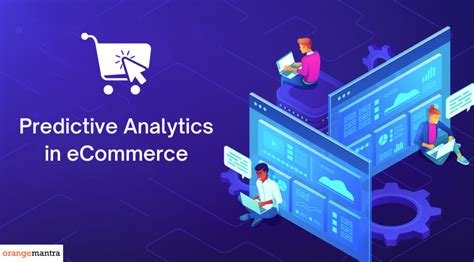Augmented Reality (AR) is revolutionizing the retail sector by enhancing the shopping experience in innovative ways. This blog post delves into the impact of AR on retail, highlighting its significant benefits for businesses, such as increased customer engagement and higher conversion rates. However, the implementation of AR is not without challenges, including high initial costs and the need for consumer education. The article outlines essential steps for retailers to successfully integrate AR into their operations, ensuring a seamless transition and maximized impact. Additionally, it explores future trends in augmented reality and retail, projecting how technology will continue to evolve and shape consumer interactions. Overall, the integration of augmented reality presents a promising future for the retail industry, inviting businesses to embrace change and enhance their customer experiences.
Understanding Augmented Reality’s Impact On Retail
The introduction of Augmented Reality (AR) into the retail sector has reshaped how consumers engage with brands and make purchasing decisions. By blending digital elements with the physical world, AR offers a unique shopping experience that enhances product visualization and consumer interaction. This emerging technology enables retailers to create immersive environments where customers can explore products in a more interactive and personalized manner.
Retailers recognize that the integration of Augmented Reality can significantly enhance customer satisfaction and boost sales. When technology is thoughtfully applied, shoppers can visualize products in their own spaces, try on clothing virtually, and access detailed information instantly. This transformation in shopping behavior not only encourages immediate purchases but also fosters a stronger brand connection, establishing a competitive advantage in an ever-evolving marketplace.
- Key Factors Influencing Adoption
- Technological advancements in AR applications
- Consumer acceptance of AR technology
- The cost of AR implementation
- Integration with existing retail systems
- Availability of AR-compatible devices
- Marketing strategies that showcase AR capabilities
- Regulatory and privacy concerns surrounding AR data usage
Despite the promising benefits, retailers face challenges when implementing Augmented Reality. These include significant investment costs, potential user resistance to new technologies, and the need for ongoing technical support. Furthermore, retailers must navigate the complexities of data privacy laws as they incorporate AR into their business models. Overcoming these hurdles is essential for retail businesses to fully harness the transformative potential of AR and create lasting relationships with their customers.
Benefits Of Augmented Reality For Retail Businesses
The incorporation of Augmented Reality (AR) in the retail sector is revolutionizing the way consumers engage with products. Retailers leveraging AR technology are witnessing a remarkable transformation in their customer interactions, leading not only to improved sales but also to a more enjoyable shopping experience. The essence of AR lies in its ability to merge the digital and physical worlds, providing consumers with interactive and immersive experiences that guide their purchasing decisions.
One of the most pronounced benefits of integrating Augmented Reality into retail is the increased customer engagement it fosters. As consumers explore products via AR applications, they become more informed about their purchases, leading to greater satisfaction. Retailers can facilitate this engagement through various features such as virtual try-ons or interactive product displays, enticing customers to spend more time examining offerings and thus enhancing the overall shopping journey.
Increased Customer Engagement
AR applications keep customers engaged longer as they interact with products in more dynamic ways. For instance, shoppers can visualize furniture in their own homes or try on clothes virtually before making a purchase. These experiences create a sense of excitement and discovery, which can directly translate to increased loyalty toward brands and retailers. By providing an immersive shopping experience, businesses can encourage repeat visits and foster a positive relationship between consumers and their brand.
Enhanced Product Visualization
Another key advantage of Augmented Reality for retail businesses is enhanced product visualization. This technology helps consumers to see how a product fits into their lives even before they make a purchase. For example, AR can showcase intricate details of a product, inform users about its features, or allow them to compare multiple options side-by-side. In an era where online shopping prevails, this form of interactive engagement is invaluable.
Top Advantages of Implementing AR
- Boosts customer engagement and interaction.
- Improves product visualization, aiding in purchasing decisions.
- Reduces returns by allowing customers to try products virtually.
- Enhances brand loyalty through memorable shopping experiences.
- Encourages social sharing and promotion of products.
- Provides valuable data insights into consumer preferences.
Incorporating Augmented Reality into retail strategies not only offers numerous benefits but also positions businesses to stand out in a competitive market. By leveraging these advantages, retailers can pave the way for increased customer satisfaction and loyalty, ultimately driving sales growth. The future of retail lies in the integration of innovative technologies like AR, which enable brands to create unique and engaging shopping experiences for their customers.
Challenges And Limitations In Using AR In Retail
The application of Augmented Reality in retail offers exciting opportunities, but it is not without its challenges and limitations. As retailers look to enhance the shopping experience using this innovative technology, they face several hurdles that can impede its successful integration. Understanding these challenges is crucial for retailers aiming to implement Augmented Reality solutions effectively.
One major challenge is the high cost of AR development and implementation. Building a robust AR platform requires significant investment in technology, skilled talent, and ongoing maintenance. Retailers must weigh the potential return on investment against these upfront costs, which can be prohibitive for smaller businesses. Additionally, the complexity of AR technology may require specialized knowledge that many retailers lack.
- Consumer acceptance and adaptability to new technology
- High development and operational costs
- Limited access to compatible hardware
- Potential technical issues and malfunctions
- Lack of standardization across AR applications
- Privacy concerns regarding data collection
- Integration challenges with existing systems
Another significant limitation lies in consumer accessibility and preferences. While younger demographics may readily engage with Augmented Reality, older consumers might be more hesitant to try new technology. Retailers must therefore invest in educational initiatives to ensure all customers can benefit from AR experiences. Furthermore, ensuring that the AR applications are user-friendly is essential to prevent alienation of potential users.
Lastly, privacy concerns and data security issues present a daunting obstacle. As AR applications often rely on user data to personalize experiences, retailers must navigate complex regulations surrounding data privacy. Successful implementation of Augmented Reality in retail is predicated on maintaining consumer trust, which can only be achieved through transparency and robust data protection measures.
Steps To Successfully Implement Augmented Reality In Retail
To truly capitalize on the transformative potential of Augmented Reality in retail, businesses must approach implementation thoughtfully and strategically. The integration of AR not only enhances customer engagement but also enriches the shopping experience. The successful adoption of this technology begins with understanding the needs of your customer base and aligning AR strategies to those specific needs.
One of the key steps includes gaining buy-in from all stakeholders involved in the retail operation. This involves educating employees about the benefits of AR, as their collaboration is crucial for smooth implementation. Additionally, investing in training programs can greatly facilitate the transition and ensure that the team is well-equipped to assist customers using AR features.
Practical Steps For Retail Integration
- Define clear objectives for the AR project based on customer needs and business goals.
- Conduct comprehensive market research to understand current trends and consumer preferences.
- Choose the right AR technology that aligns with your retail environment and target audience.
- Develop a user-friendly application that integrates seamlessly with existing retail systems.
- Train employees effectively to assist customers and leverage the AR technology.
- Launch the AR experience with a marketing campaign to boost awareness and engagement.
- Collect feedback and data to enhance the AR experience continually.
Lastly, it’s imperative to measure the effectiveness of your AR initiatives. By analyzing customer feedback, engagement metrics, and sales data, retailers can refine their AR offerings and ensure they provide value to customers. Adopting a cycle of continuous improvement will not only keep the AR experience fresh but can significantly enhance customer loyalty over time. In a fast-evolving market, staying ahead with Augmented Reality solutions will give retailers a competitive edge in creating memorable shopping experiences.
Future Trends In Augmented Reality And Retail
The evolution of technology continues to transform the retail industry, with Augmented Reality (AR) leading the charge. As advancements in AR technology blossom, retailers are poised to harness these tools to provide enhanced customer experiences. By blending the physical and digital worlds, AR can engage consumers in innovative ways that facilitate informed purchasing decisions. Retailers must stay ahead of the curve to understand and adapt to these emerging trends.
Emerging Innovations To Watch:
- Virtual Try-Ons: Customers can visualize clothing or accessories on themselves using AR mirrors.
- Interactive Displays: Engaging, 3D models that consumers can interact with to learn more about products.
- Personalized Shopping Experiences: AR can tailor experiences based on customer preferences and behaviors.
- Location-Based Experiences: Geolocation technology enhances in-store navigation with AR guidance.
- AR Product Visualizations: Detailed, 3D representations of products in a realistic setting.
- Social Media Integration: Using AR filters and effects to boost product visibility through social channels.
- Gamification of Shopping: Incorporating gaming elements into shopping experiences to enhance engagement.
As we move forward, the integration of AI with Augmented Reality will be a key driver in streamlining retail operations. AI algorithms can analyze customer data to provide tailored recommendations and insights, allowing AR experiences to become more intuitive. This synergy between AI and AR helps retailers create a seamless shopping journey, meeting consumer expectations while optimizing inventory management and sales processes.
AI and AR Integration
The convergence of AI and Augmented Reality promises to reshape the retail landscape significantly. By leveraging machine learning, retailers can anticipate consumer needs and preferences, ensuring a personalized shopping experience that resonates with customers. This level of customization will not only enhance customer satisfaction but also foster brand loyalty.
Changing Consumer Behaviors
The rise of tech-savvy consumers has made it imperative for retailers to adapt to changing shopping behaviors. Many consumers now favor online shopping with immersive experiences, thus increasing the demand for Augmented Reality applications. As retailers embrace these immersive experiences, they will better connect with consumers, ultimately leading to increased sales and customer retention. The future of retail is undoubtedly reliant on understanding and leveraging these behavioral changes.
Frequently Asked Questions
What is augmented reality and how is it used in retail?
Augmented reality (AR) is a technology that overlays digital information—like images, videos, or 3D models—onto the real world, enhancing the shopping experience. In retail, AR is used for virtual try-ons, interactive displays, and providing additional product information, allowing customers to visualize products in their own environments.
What are the main benefits of using augmented reality in retail?
The main benefits include enhanced customer engagement, improved decision-making through visualization, increased sales by reducing product return rates, and providing a unique shopping experience that can differentiate a brand from its competitors.
What challenges do retailers face when implementing augmented reality?
Challenges include high development costs, the need for specialized technical skills, potential privacy concerns from customers, and ensuring that AR applications are user-friendly and don't disrupt the shopping experience.
What steps should retailers take to successfully implement augmented reality?
Retailers should start with defining their goals, researching the target audience, choosing the right AR technology, creating engaging content, conducting thorough testing, and promoting the new features effectively to encourage customer adoption.
How does augmented reality enhance customer decision-making in retail?
AR allows customers to visualize how products will look or fit in their environment, helping them make informed decisions. For instance, virtual furniture placement or virtual fitting rooms allow customers to see the items in context before making a purchase.
What future trends can be expected in augmented reality and retail?
Future trends include the integration of AR with artificial intelligence for personalized shopping experiences, the use of AR in omnichannel retail strategies, and advancements in AR hardware that make shopping experiences more seamless and immersive.
Can augmented reality improve customer loyalty in retail?
Yes, by providing unique and interactive shopping experiences, AR can enhance customer satisfaction, leading to increased loyalty. Engaging AR features can encourage repeat visits and foster brand attachment, as customers are likely to remember their positive experiences.
Is augmented reality suitable for all types of retail businesses?
While AR can benefit many types of retail businesses, its suitability largely depends on the products sold and the target audience. Fashion, home decor, and cosmetics are sectors where AR has shown significant success, while its effectiveness may vary in other sectors where visualization is less impactful.









